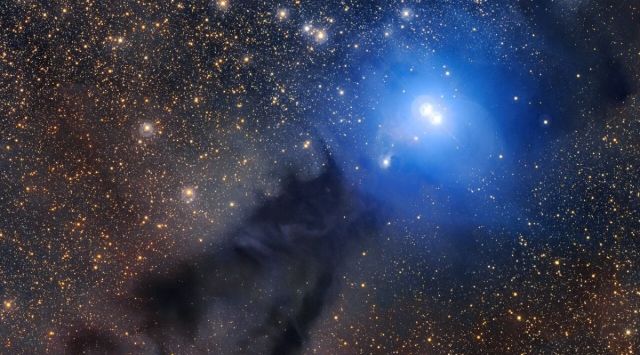Astronomers piece together millions of images to reveal vast array of star nurseries
Astronomers know that stars form when clouds of gas and dust collapse under their own gravity but they do not fully understand the many details of the process. How many stars are born out of a cloud? How big are they? How many stars will have planets?
 The Lupus 3 region in visible light. (Image credit: ESO)
The Lupus 3 region in visible light. (Image credit: ESO) Astronomers have used the European Southern Observatory’s (ESO) Visible and Infrared Survey Telescope for Astronomy (VISTA) to create an extensive atlas of five nearby “star nurseries.” This image is a mosaic of more than one million images. Many stars in the making can be seen embedded in thick clouds of dust.
“In these images we can detect even the faintest sources of light, like stars far less massive than the Sun, revealing objects that no one has ever seen before. This will allow us to understand the processes that transform gas and dust into stars,” said Stefan Meingast, lead author of the study published today in Astronomy & Astrophysics, in a press statement. Meingast is an astronomer at the University of Vienna
Astronomers know that stars form when clouds of gas and dust collapse under their own gravity but they do not fully understand the many details of the process. How many stars are born out of a cloud? How big are they? How many stars will have planets?
Meingast and his team of astronomers set out to answer these questions by five star-forming regions in our galactic vicinity using the VISTA telescope’s VIRCAM. With VIRCAM’s infrared capabilities, they were able to capture the light coming from deep inside clouds of dust.
“The dust obscures these young stars from our view, making them virtually invisible to our eyes. Only at infrared wavelengths can we look deep into these clouds, studying the stars in the making,” explains Alena Rottensteiner, a co-author, in a press statement .Rottensteiner is a PhD scholar at the University of Vienna.
The survey is called VISIONS and it observed star-forming regions in the constellations of Orion, Ophiuchus, Chamaeleon, Corona Australis and Lupus. According to ESO, these regions are less than 1,500 light-years away and are so large that they take up a large part of the sky as we see it. Interestingly, the diameter of VIRCAM’s field of view is as wide as three full Moons.
Over a period of five years, the astronomers took more than one million images of these star-forming regions. These images were then piece together into a large mosaic, creating the landscape in the image above.
Since the same regions of the universe were observed repeatedly, VISIONS data also allowed astronomers to study how young stars move. This is not an easy task. The distances that these stars drift as apparent from Earth is as small as the width of a human hair seen from ten kilometres away.







